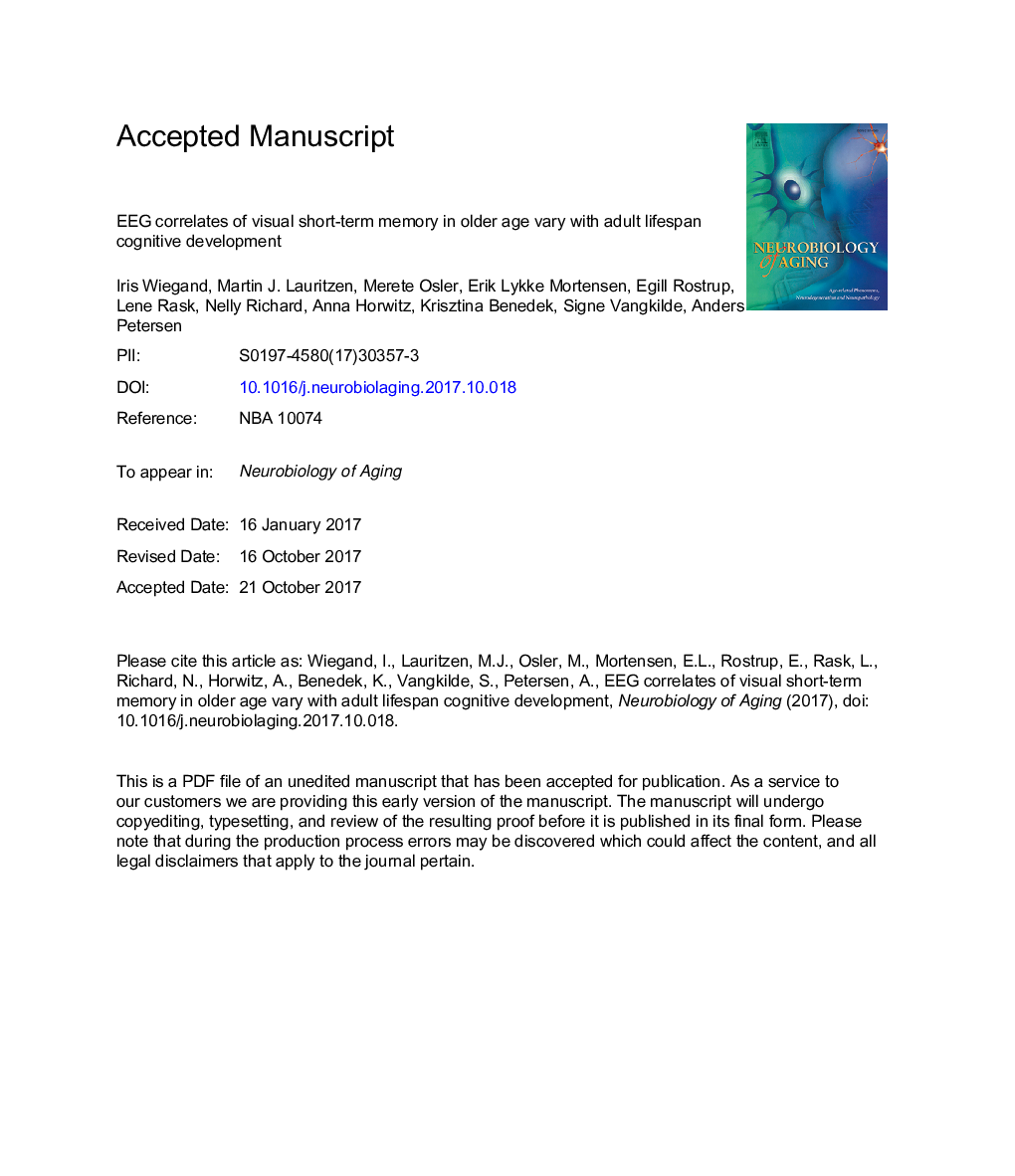| Article ID | Journal | Published Year | Pages | File Type |
|---|---|---|---|---|
| 6803141 | Neurobiology of Aging | 2018 | 41 Pages |
Abstract
Visual short-term memory (vSTM) is a cognitive resource that declines with age. This study investigated whether electroencephalography (EEG) correlates of vSTM vary with cognitive development over individuals' lifespan. We measured vSTM performance and EEG in a lateralized whole-report task in a healthy birth cohort, whose cognitive function (intelligence quotient) was assessed in youth and late-middle age. Higher vSTM capacity (K; measured by Bundesen's theory of visual attention) was associated with higher amplitudes of the contralateral delay activity (CDA) and the central positivity (CP). In addition, rightward hemifield asymmetry of vSTM (Kλ) was associated with lower CDA amplitudes. Furthermore, more severe cognitive decline from young adulthood to late-middle age predicted higher CDA amplitudes, and the relationship between K and the CDA was less reliable in individuals who show higher levels of cognitive decline compared to individuals with preserved abilities. By contrast, there was no significant effect of lifespan cognitive changes on the CP or the relationship between behavioral measures of vSTM and the CP. Neither the CDA, nor the CP, nor the relationships between K or Kλ and the event-related potentials were predicted by individuals' current cognitive status. Together, our findings indicate complex age-related changes in processes underlying behavioral and EEG measures of vSTM and suggest that the K-CDA relationship might be a marker of cognitive lifespan trajectories.
Related Topics
Life Sciences
Biochemistry, Genetics and Molecular Biology
Ageing
Authors
Iris Wiegand, Martin J. Lauritzen, Merete Osler, Erik Lykke Mortensen, Egill Rostrup, Lene Rask, Nelly Richard, Anna Horwitz, Krisztina Benedek, Signe Vangkilde, Anders Petersen,
